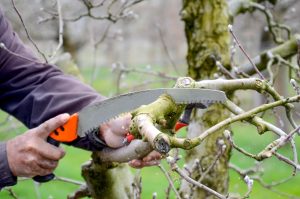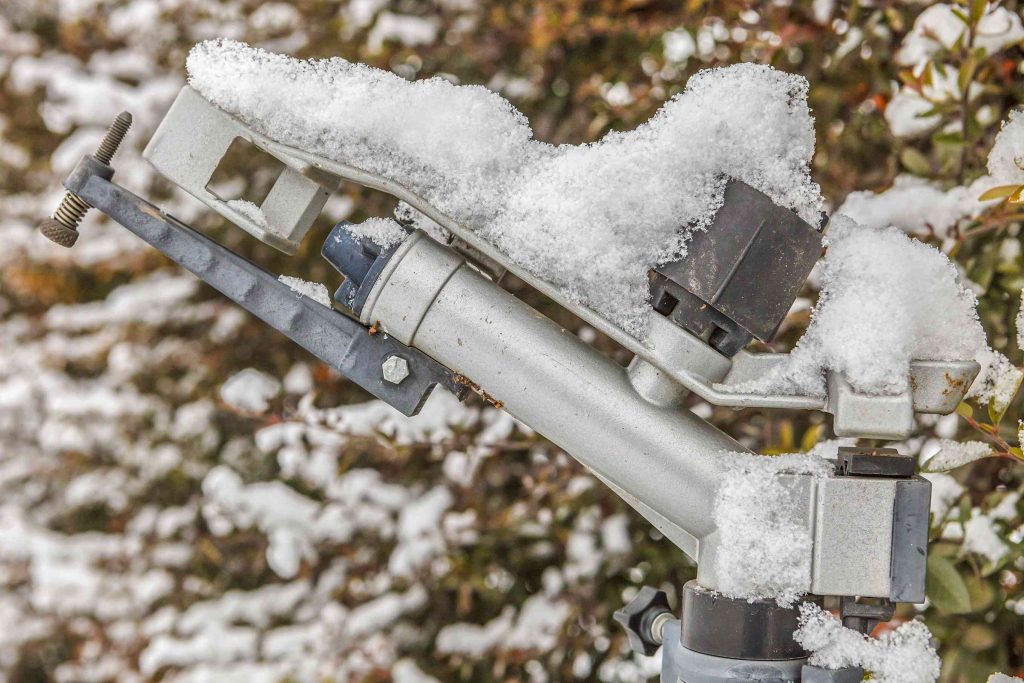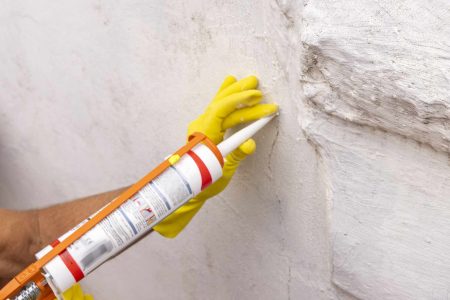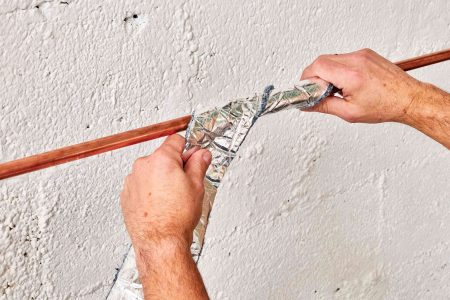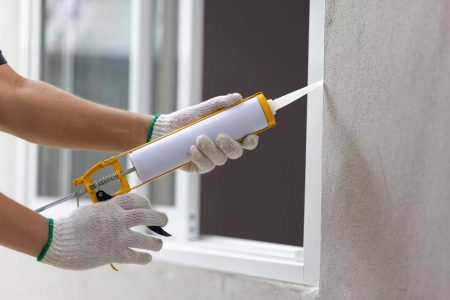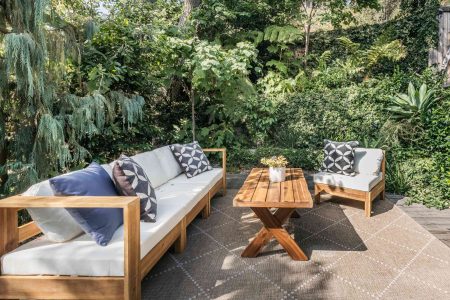In-ground sprinkler systems are incredibly helpful in keeping the grass and garden looking great during the warm months of the year, but when the temperature drops, the water within the buried hoses and pipes is likely to freeze, forcing the pipe to expand and crack. Rigid PVC pipes may burst entirely, instead of developing slow leaks, which is more common with flexible polyethylene pipes.
To help prevent damage to your sprinkler system, it’s important to shut off the flow of water to the system. You also need to make sure to drain the water out of the pipes, so they remain empty throughout the cold winter months. Follow these steps to drain and blow out your sprinkler system, protecting the lines from cracks and leaks.
Warning
Only attempt to blow out your sprinkler system if you have experience working with an air compressor. An air compressor can cause extensive damage to the sprinkler system and could put an inexperienced user or others at risk if the air pressure makes the water line burst.
What You’ll Need
Equipment / Tools
- Bucket
- Air compressor
- Air compressor water blow out adapter
Instructions
-
Shut Down and Drain the Water Line
Begin the process of winterizing your sprinkler system by turning off the isolation valve to the sprinkler system to prevent water from the main line from flowing into the pipes. There will be a hose bib (small faucet) located after the isolation valve, either inside the home or outside before the backflow preventer. Place a bucket underneath this faucet, then open the hose bib to drain the water from the main sprinkler line.
How to Find Your Home’s Main Water Shut Off Valve -
Turn off the Timer
Not all sprinkler systems run on a timer, but if your system does have a timer, then it’s advised to shut it down. The reason for this is to help protect the timer and the sprinkler system by reducing the risk of electrical or mechanical faults throughout the winter.
Some timers can also be set to rain mode, which tells the timer that it’s raining and it doesn’t need to come on. This allows the programming to remain unchanged, and when the spring rolls around again, you can simply turn off rain mode to resume your regular watering schedule.
-
Connect the Air Compressor
In order to blow out the sprinkler system, you will need an air compressor that can produce air at a volume of at least 30 to 50 cubic feet per minute (cfm) and at pressures of 40 to 80 pounds per square inch (PSI).
Close the airflow valves on the compressor and attach the air compressor to the irrigation system with an air compressor blow out adapter. These adapters are regularly used for winterizing RVs, so they should be relatively easy to find.
-
Open Sprinklers
Even a powerful air compressor isn’t capable of blowing out the entire system without risking damage to the pipes and sprinklers, so you will need to open each zone of sprinklers, one at a time, starting with the furthest zone. Opening the sprinklers provides a path for the air to travel and it will allow the water to escape instead of building up pressure inside a closed system.
By starting with the farthest zone from the main line you can ensure that the entire irrigation system is adequately empty with a zone-by-zone blow out. The only exception to this is if the yard includes uneven terrain, like small sloping hills. In this case, start with the sprinkler zone that is on the highest level first.
How to Repair a Sprinkler System: 7 Ways -
Blow out Sprinkler Line
Begin the process of blowing out the lines by closing the backflow valves to help direct the flow of air in the opposite direction. With the farthest or highest sprinkler zone open, turn on the compressor and begin to add air to the sprinkler system. Slowly open the compressor valve, gradually adding additional air pressure as needed.
When the pressure is sufficient, you should start to see water coming through the sprinkler head. It should be noted that the air pressure should not exceed 80 PSI for PVC piping or 50 PSI for polyethylene piping.
Continue to blow water out of the sprinkler heads in the first zone until the spray of water ends, then open the next furthest or highest sprinkler zone and close the first zone. Move through each zone until all sprinkler zones have been blown out.
Repeat this process at least one more time to ensure that all water has been blown out of the system, then turn off and disconnect the compressor.
-
Release Remaining Air Pressure
Open and close the valves on the backflow preventer and on the manual drain valves to release any air pressure that is still remaining in the system, then close the valves to keep the sprinkler system isolated for the winter. The irrigation pipes and sprinkler heads should now be clear of any water, preventing them from freezing in the winter weather.
Read the full article here

